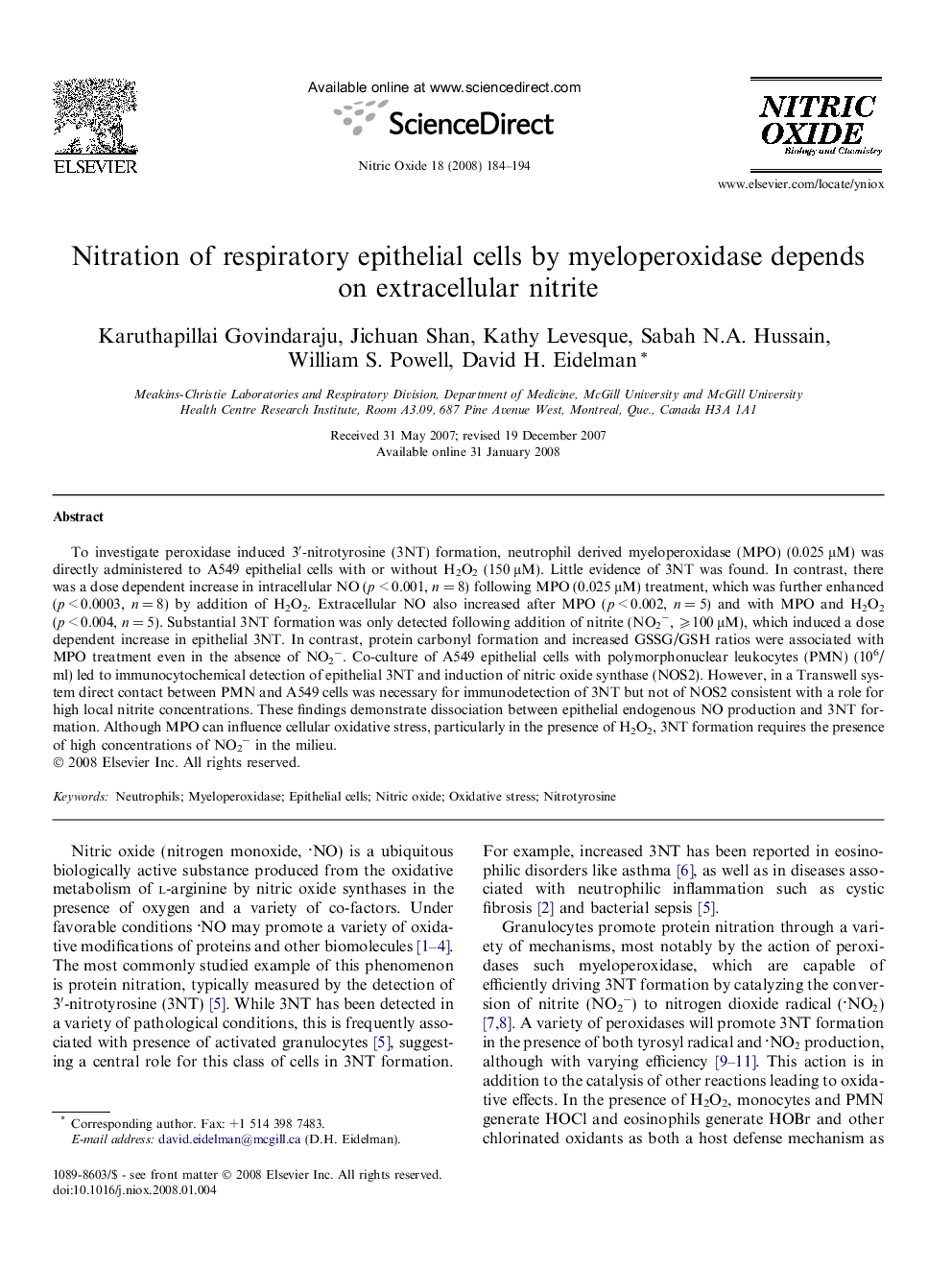| Article ID | Journal | Published Year | Pages | File Type |
|---|---|---|---|---|
| 2001726 | Nitric Oxide | 2008 | 11 Pages |
Abstract
To investigate peroxidase induced 3â²-nitrotyrosine (3NT) formation, neutrophil derived myeloperoxidase (MPO) (0.025 μM) was directly administered to A549 epithelial cells with or without H2O2 (150 μM). Little evidence of 3NT was found. In contrast, there was a dose dependent increase in intracellular NO (p < 0.001, n = 8) following MPO (0.025 μM) treatment, which was further enhanced (p < 0.0003, n = 8) by addition of H2O2. Extracellular NO also increased after MPO (p < 0.002, n = 5) and with MPO and H2O2 (p < 0.004, n = 5). Substantial 3NT formation was only detected following addition of nitrite (NO2â, ⩾100 μM), which induced a dose dependent increase in epithelial 3NT. In contrast, protein carbonyl formation and increased GSSG/GSH ratios were associated with MPO treatment even in the absence of NO2â. Co-culture of A549 epithelial cells with polymorphonuclear leukocytes (PMN) (106/ml) led to immunocytochemical detection of epithelial 3NT and induction of nitric oxide synthase (NOS2). However, in a Transwell system direct contact between PMN and A549 cells was necessary for immunodetection of 3NT but not of NOS2 consistent with a role for high local nitrite concentrations. These findings demonstrate dissociation between epithelial endogenous NO production and 3NT formation. Although MPO can influence cellular oxidative stress, particularly in the presence of H2O2, 3NT formation requires the presence of high concentrations of NO2â in the milieu.
Related Topics
Life Sciences
Biochemistry, Genetics and Molecular Biology
Biochemistry
Authors
Karuthapillai Govindaraju, Jichuan Shan, Kathy Levesque, Sabah N.A. Hussain, William S. Powell, David H. Eidelman,
